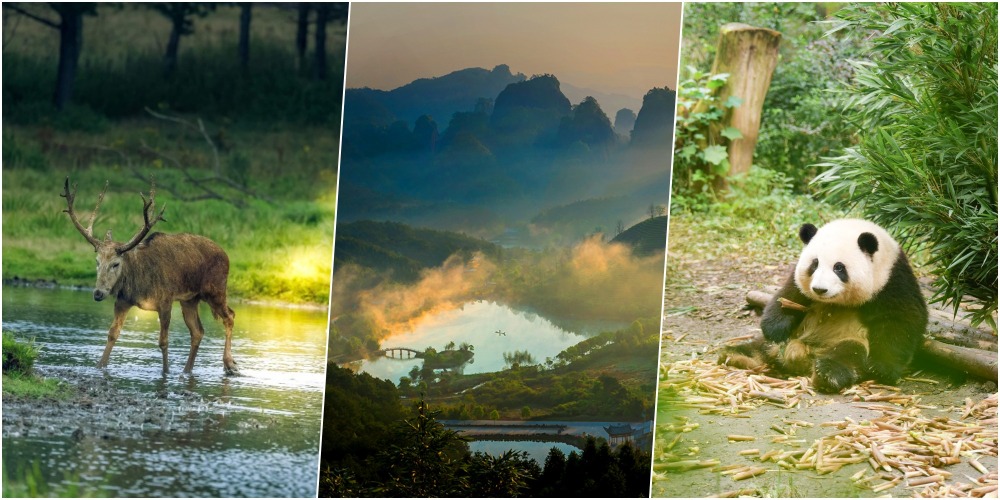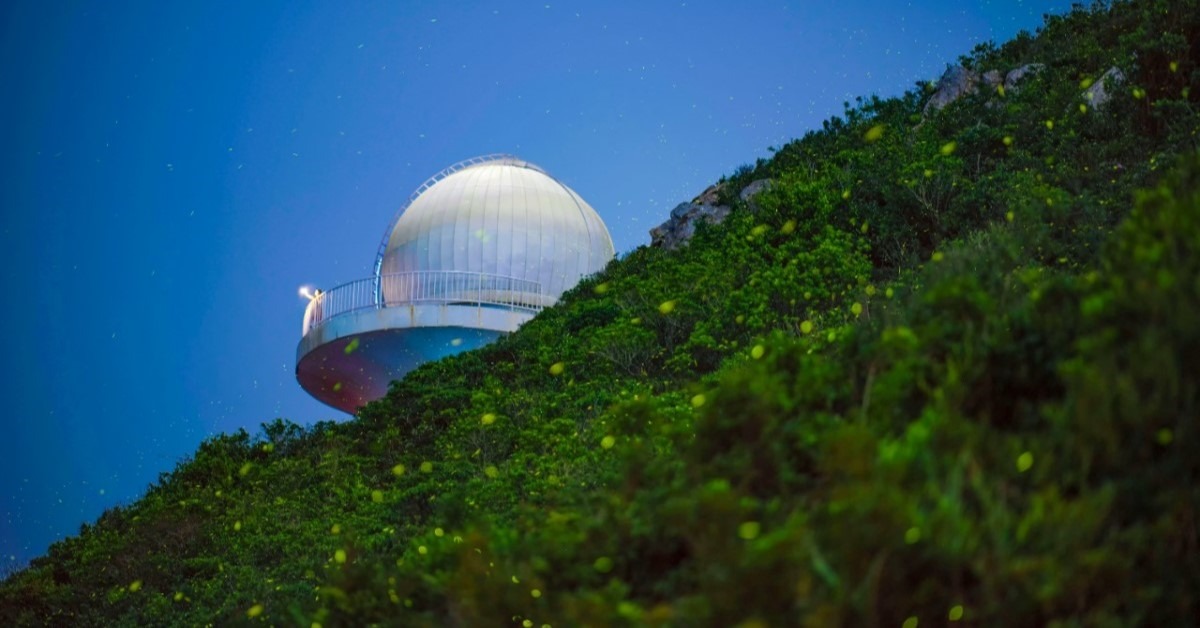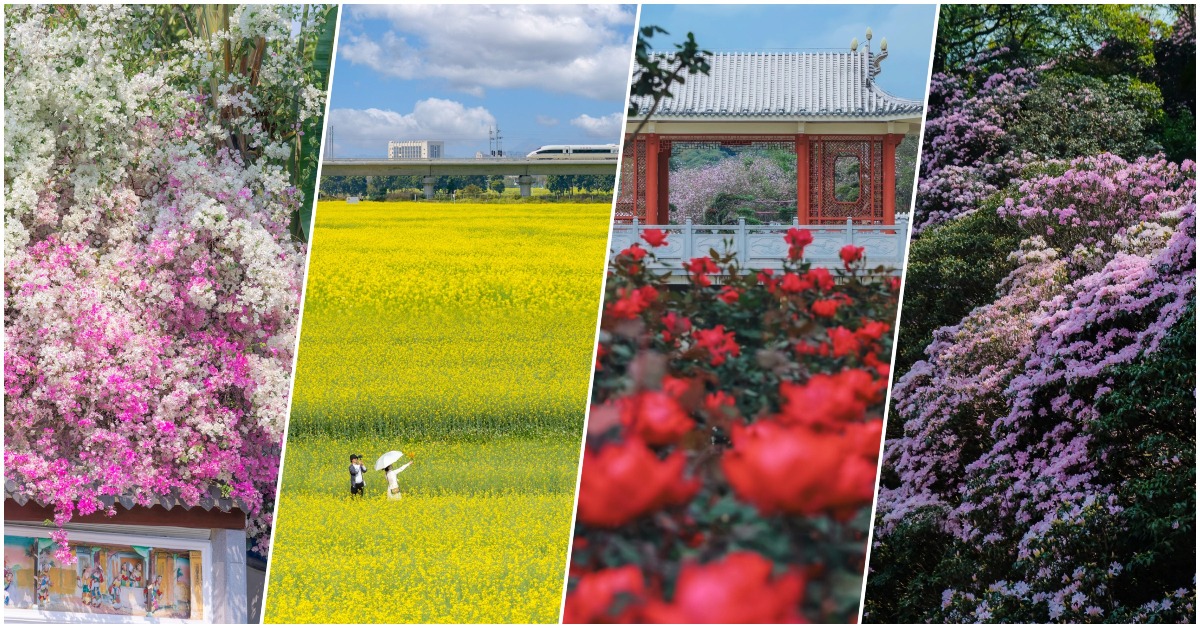Published : 2024-10-24
Since the founding of the People's Republic of China (PRC) 75 years ago, the country has weathered storms and undergone tremendous changes.
This series, "Extraordinary 75 Years", provides a deep dive in China's achievements and breakthroughs over the past 75 years.
This article, as the fourth one of the Chapter of Environmental Protection, focuses on China's achievements in biodiversity conservation, starting with the stories of five "firsts".
Human activities have accelerated the extinction of species, which is like a falling domino that threatens the survival of human beings.
As one of the countries richest in biodiversity, China has been making efforts for decades to rescue endangered species, restore ecological environment and preserve species genes, contributing to the "China Solution" for the protection of the Earth's home.
The first giant panda reserve
In 1950, a decree issued by the Chinese government mentioned the protection of rare creatures such as giant pandas, and it is considered the beginning of wildlife conservation in New China.

In 1963, the first giant panda reserve was established in Wolong, Sichuan Province.
By 2023, 67 giant panda nature reserves had been established in the country. In October 2021, the Giant Panda National Park was formally established, with a total area of more than 22,000 square kilometres, spanning three provinces—Sichuan, Shaanxi, and Gansu—covering the majority of the wild giant panda populations and their habitats as well as other endangered animals and plants in the region.
In 1983, China's National Conservation and Research Centre for Giant Panda, which located in the Wolong Reserve, was officially opened.
From the 1990s onwards, the Centre successively solved the problems like pregnancy, rearing, and reintroduction into the wild of captive pandas, which contributed to rapid growth in the panda population.
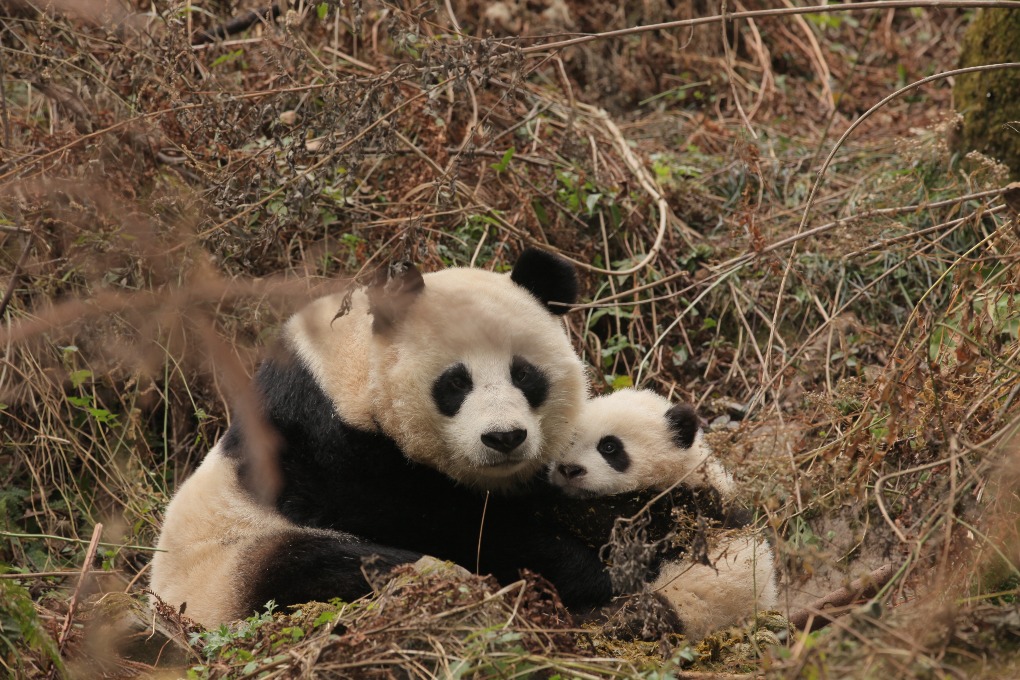
At the same time, the laws are constantly being improved.
The first Wildlife Protection Law of China was promulgated in 1988, followed by the list of key wild animals under State protection, which provided legal protection for China's endangered species such as the giant panda.
Currently, the global population of wild pandas has increased from 1,114 in the 1980s to nearly 1,900 in 2024. The number of artificially-bred captive pandas in China has also increased to 728.

In 2016, the Red List of Threatened Species of the International Union for Conservation of Nature (IUCN) downgraded the threat level of the giant panda from "Endangered (EN)" to "Vulnerable (VU)".
The conservation of giant panda has epitomised the development of wildlife conservation in China, and the giant pandas have been regarded as a model for the conservation of endangered species around the world.
Over the years, through endangered species rescue projects and habitat protection, more than 300 rare and endangered species of wild animals and plants in China have recovered and their habitats have been steadily improved.
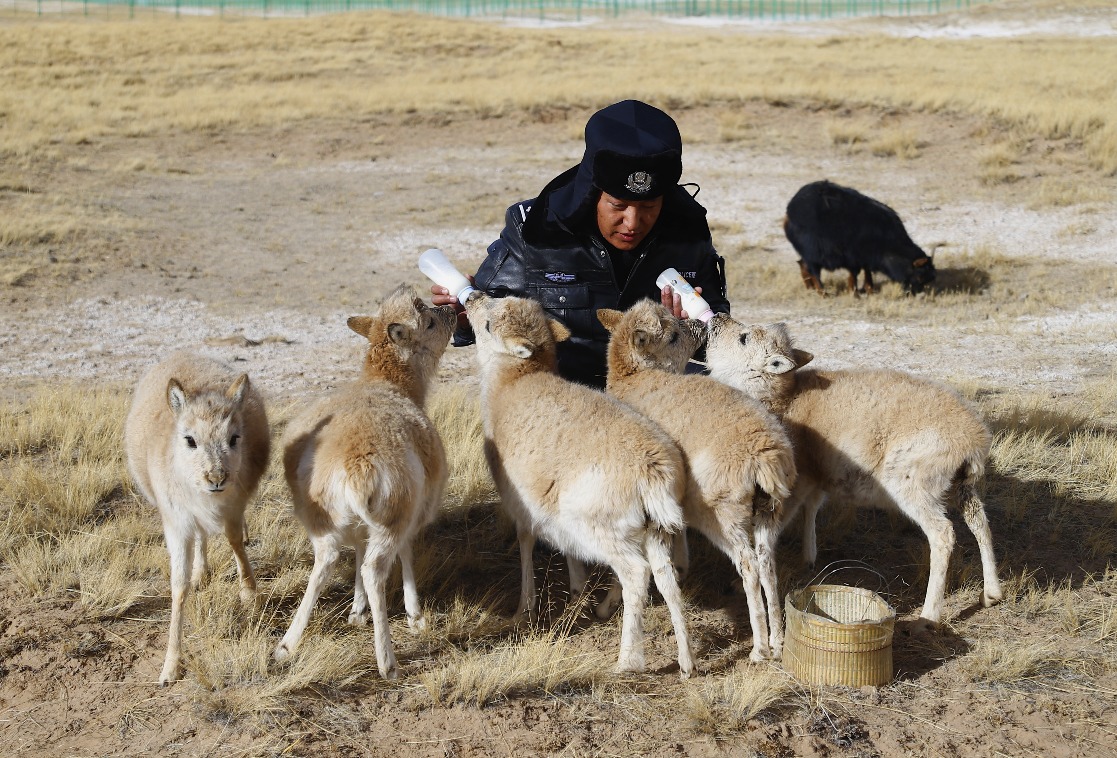
By 2024, the population of Tibetan antelopes in the Sanjiangyuan area has bounced back from the brink of extinction to approximately 300,000.
The population of Milu deer, which had once disappeared in China, has now exceeded 12,000, accounting for over 80% of the global population.
Read more: The return of the Milu Deer: "Neither fish nor fowl"
The first batch of national parks
In 2021, China's first batch of national parks was officially set up, including Sanjiangyuan, Giant Panda, Northeast Tiger and Leopard, Hainan Tropical Rainforest, and Wuyishan National Parks, with a protected area of 230,000 square kilometres, covering nearly 30% of China's land area of nationally protected wildlife and plant species.
Read more: Understand China's first batch of national parks
There are more than 100 countries worldwide that have set up national parks. China's national park construction began relatively late but has progressed rapidly.
The task of "establishing a national park system" was proposed for the first time in 2013.

Starting from 2016, China has established 10 pilot national parks, integrating existing natural reserves for unified management, overall protection, and systematic restoration.
In 2021, five national parks were formally established, which is regarded as a new chapter in China's construction of natural reserves.
China plans to establish 49 national parks by 2035, with a total area reaching 1.1 million square kilometres, building the world's largest national park system.
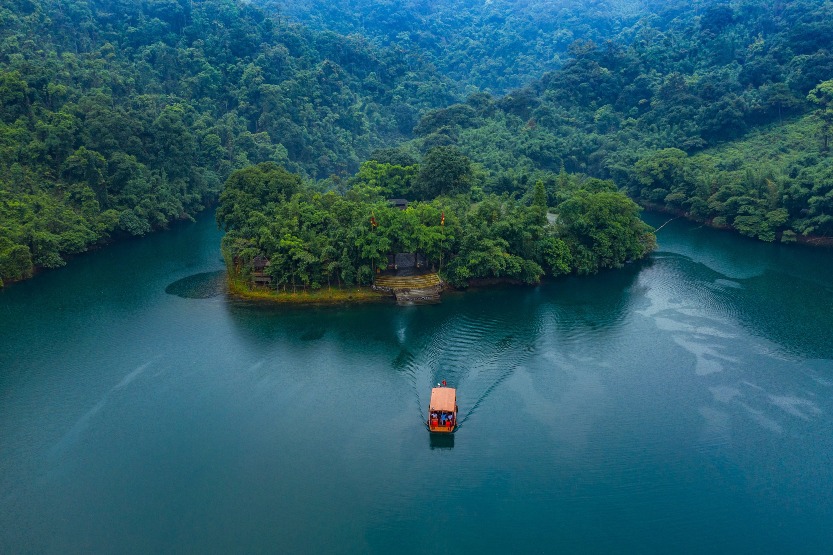
National park plays one of the most sicnificant roles in China's nature reserve construction.
Since the establishment of the first nature reserve in Dinghushan, Guangdong Province, in 1956, China's nature reserve construction has undergone changes from scratch, with its scale growing from small to large and function evolving from singular to comprehensive.
A nature reserve system has been gradually established, with national parks as the main body, nature reserves as the foundation, and various natural parks as the supplementary.
At present, China has established nearly 10,000 nature reserves of all levels and types, covering about 18% of the country's land area. 90% of the land ecosystems and 85% of wild plant and animal species have been effectively protected.
The first Germplasm Bank
The germplasm bank, also known as the "seed bank" and the "Noah's Ark" of wildlife.
The Southwest China Wildlife Germplasm Bank, which began operations in 2007, is China's first national wildlife germplasm bank. It is located in Yunnan, a province housing over half of China's species.

As of December 2023, the germplasm bank has stored nearly 30,000 species and over 300,000 copies of germ resources of wild animals and plants, including more than 11,000 kinds of local wild plant seeds, making it the largest wildlife germplasm bank in Asia.
The seeds stored in the germplasm bank are processed through drying and hermetic packing, and the store rooms are kept at -20℃, which makes the seeds survive for thousands of years.
Every seed or gene is a beacon of hope preserved for the future.
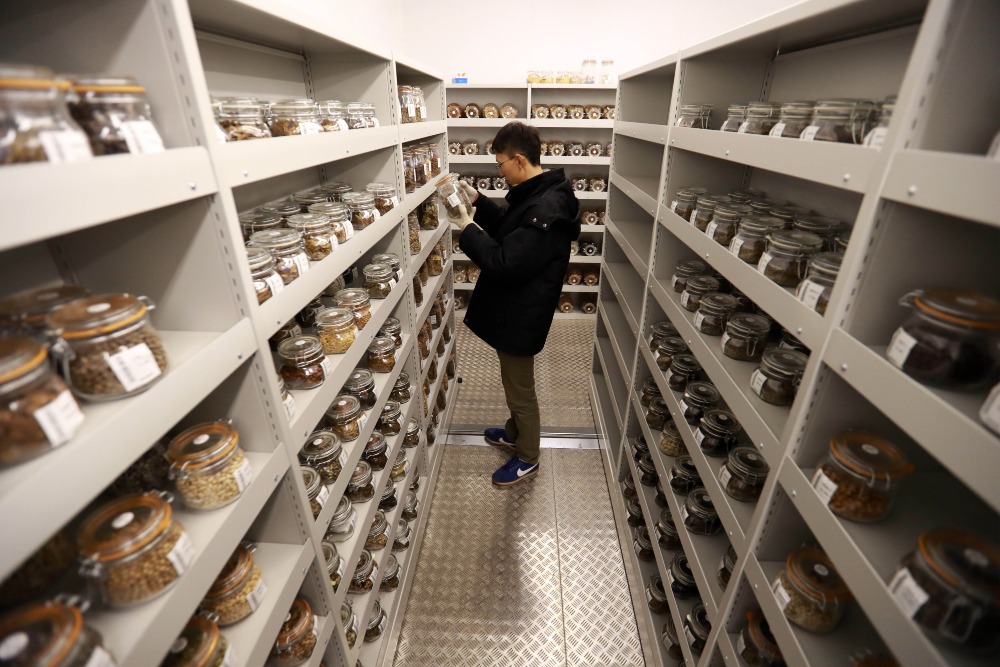
At present, China has built a number of germplasm banks covering a wide range of fields such as crops, livestock and poultry, aquatic products and plants.
A national plant germplasm bank is being planned on the west side of the Beijing Botanical Garden, which is expected to open by 2026, with an area of 60,000 square metres. It is estimated to be able to collect 70,000 varieties of plant genetic resources from around the world, covering all types of rare and endangered plants in China.
The first wetland law
China's first law specifically for wetland protection, the Wetland Conservation Law of the People's Republic of China (hereinafter referred to as the "Wetland Conservation Law"), was promulgated in December 2021 and came into effect on June 1, 2022.
It contains seven chapters and 65 articles, covering various content such as classified management system, conservation use system, restoration system and so forth.
Read more: China's first legislation for wetland conservation focuses on maintaining ecological balance
Since joining the Wetland Convention in 1992, China has gradually established a wetland conservation management system.
The National Wetland Protection Project Plan implemented by the government has resulted in a cumulative investment of 19.8 billion CNY (about 21.5 billion HKD) in more than 10 years and the completion of more than 4,100 conservation and restoration projects.
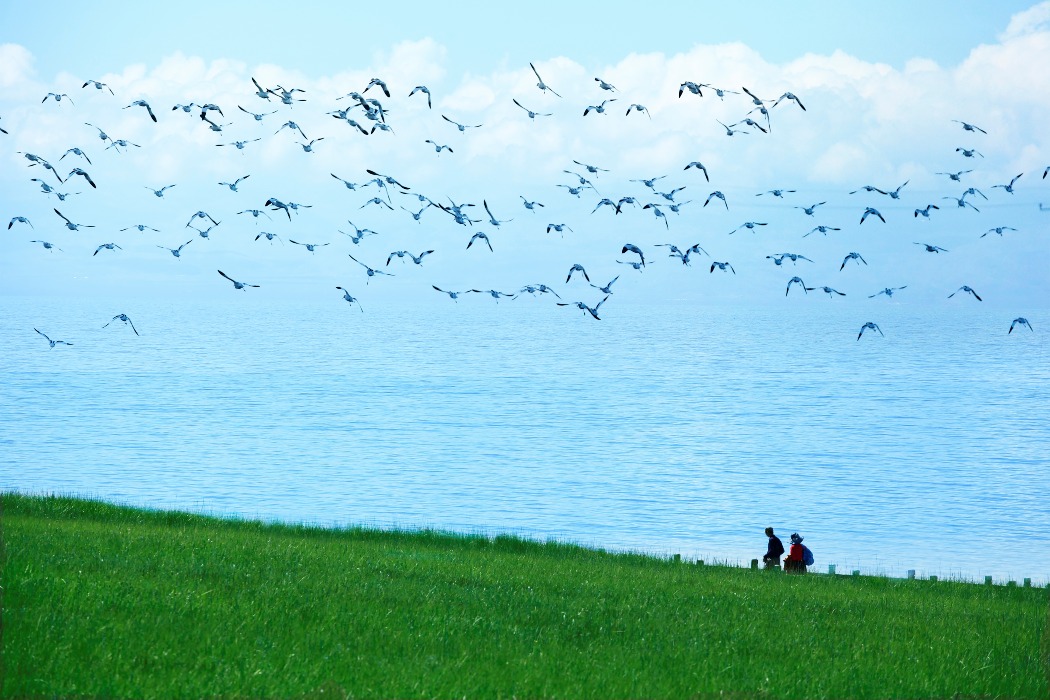
Currently, China has established more than 2,200 wetland-type natural reserves, with newly added and restored wetlands exceeding 800,000 hectares. China's total area of wetlands has reached 56.35 million hectares, ranking first in Asia.
The rate of wetland conservation in China has exceeded 52%, and the rate is expected to reach 55% by 2025.
The first Yangtze River fishing ban
On 1 January 2021, a 10-year fishing ban was imposed on the entire Yangtze River basin, which is regarded as a milestone in China's efforts to protect biodiversity.

As the mother river of the Chinese nation, the Yangtze River used to harbour more than 4,300 species of aquatic organisms, but before the fishing ban, the Yangtze River's biological integrity index had reached the "fishless" level.
In the first year of the 10-year fishing ban, more than 110,000 fishing boats were halted, and nearly 280,000 fishermen had to switch to other trades.
The Chinese government issued financial compensation exceeding 20 billion CNY, providing skill training for fishermen and offering public welfare positions.
By 2024, over 150,000 employable fishermen have found new occupations.

Statistical data show that in 2022, 193 indigenous fish species were monitored in key waters of the Yangtze River basin, an increase of 25 species over 2020.
The natural population of the Yangtze finless porpoise, has seen a historic increase in natural population numbers, 23% more than 2017, reaching 1,249.
